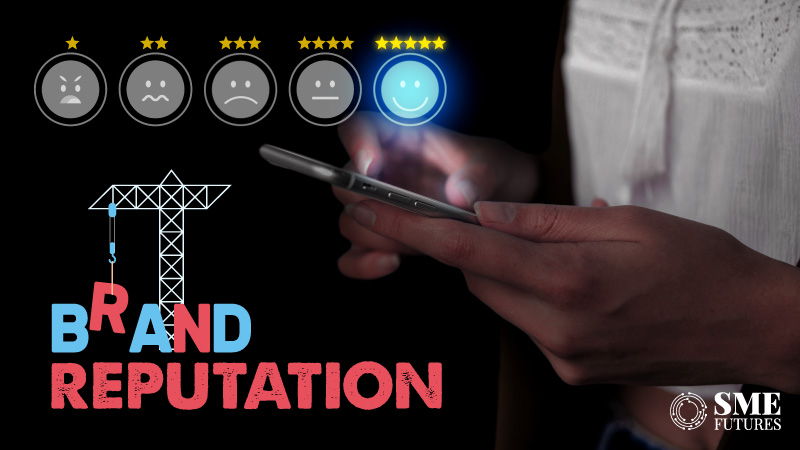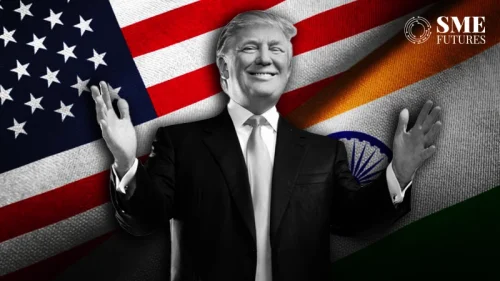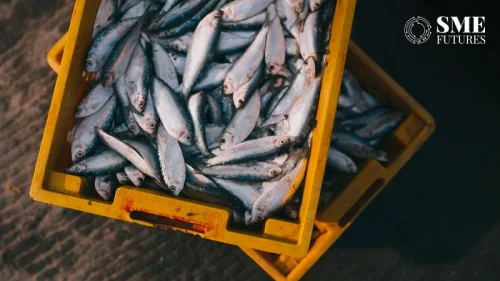Introduction: Brand Reputation
A brand is one of the most valuable assets for an organization or individual and a strong brand identity oftentimes represents their image and the positioning of their brand in the consumers’ minds. Simply put, brand reputation is how a brand is viewed by the public. Every time that a consumer interacts with a brand and forms a perception about it, the brand reputation is affected. Brand reputation is one of the most important factors that allows an organization or individual to reap the benefits of the trust enforced in the brand by the customers. A strong brand reputation lends credibility and is a determining factor of a business’s success. The stronger a brand, the more likely are consumers to purchase the goods or services of a business.
Brand reputation in Social Media Era: Management and Challenges
Over the last decade, there has been a discernable shift in the way a brand and its consumers interact with one another. The communication techniques have expanded from traditional media such as television, print and radio to digital platforms such as social media platforms such as Twitter, Instagram, Facebook and LinkedIn.Businesses today are heavily reliant on social media for reaching out to newer audiences and to understand how the brand is perceived. With increased accessibility, consumers today have more awareness about a brand and are more likely to consider online reviews before purchasing a product or a service. Further, with endorsements by social media influencers and celebrities on every digital platform recommending consumers on what to buy, what to eat and even where to invest, the reach and impact of a brand on consumers is greater than ever. According to the guidelines “Endorsement Know-hows for Celebrities, Influencers & Virtual Influencers on Social Media Platforms” issued by the Department of Consumer Affairs, “influencers” have been defined as “creators who advertise products and services with a strong influence on the purchasing decisions or opinions of their audience, whereas “virtual influencers” have been defined as “fictional computer generated ‘people’ or avatars who have realistic characteristics, features and personalities of humans, and behave in a similar manner as influencers.
As per a report by the Advertising Standards Council of India (ASCI), 90% of respondents have at least once bought a product recommended by an influencer with about 64% of them feeling that a brand backed by an influencer looks more trustworthy to them . The Department of Consumer Affairs under Ministry of Consumer Affairs, Food and Public Distribution has valued the size of the social influencer market in India at Rs. 1275 Crores, which is expected to increase to Rs. 2800 Crores by 2025.
This has, in turn, brought about a perceptible change in the management of the reputation of a brand by a business. In this social media age where any newsor even a comment can go viral in minutes, it has become indispensable for a business to remain on its toes for protection of its brand reputation.
The source of the concept of brand reputation does not lie in any specificlaw.The same has developed over the years as a practice to create strategies for building and maintaining a positive perception of the brand.
Brand reputation management is thereforea dynamic process.It is no longer important for a business to just influence a consumer’s perception towards a brand but also to maintain the perception.Brand reputation is a double-edged sword and both positive and negative perceptions about a brandhave the ability to create a long-term impact on the business. While a positive brand reputation indicates a customer’s loyalty and confidence in a brand, a negative perception of a brand can significantly adversely affect the image and market value of a brand.
For example, in April 2023, a video from an influencer criticizing the popular health drink brand Bournvita over its high sugar content went viral and was shared across multiple social media platforms. This has prompted the National Commission for Protection of Child Rights to issue a notice to the company, Mondelez International India Limited to withdraw all misleading advertisements, packaging and labels.While the companyhas released a statement rejecting the claims and also sent a legal notice to the influencer to take down the video,the video had already garnered up to 12 million views before it was deleted. The controversy has also affected the brand image of the product, which is popular among children and has been sold for 75 years as a “health drink”.
With the advent of social media, brands have also found themselves to be susceptible toanincreased scope for misuse of intellectual property such as images, videos and other information, which can be easily copied and reused, instances of impersonation using fake accounts, sale of counterfeit goods, negative comments by trolls and de-influencers, and boycott of brands due to the same not adhering to social or religious sentiments.
In order to maintain the brand reputation, businesses / individuals also need to be watchful of sale of counterfeit and pirated goods online through social media platforms or recommendations by referring to any particular famous influencer. Sellers of fake products often use pictures of the genuine products and use keywords advertising to confuse theconsumers to sell the counterfeit products as the original.
Legal Recourses for Protection of Brand Reputation Online:
In order to safeguard the brand reputation, it is imperative for businesses to not just take redressal measures upon gaining knowledge of any activities harming the brand reputation, but also ensure that they are in compliance of the existinglaws and regulations to start with. Some of the relevant laws and practices that are helpful to abusiness for protection of its brands are highlighted below:
a) Protection and enforcement of brands, images, domain names and other information under the relevant intellectual property laws such as the Trade Marks Act, 1999, the Copyright Act, 1957, the Designs Act, 2000, etc.should be an important part of a business’s brand protection strategy.
b) The Information Technology Act, 2000 lays down offences and penalties for sending false or offensive information, tampering with computer networks etc.
c) Monitoring and directly reporting infringement to social media providers to have the infringing content removed. All social media platformsprovide procedures for “take down” that enable the rights holders toreport violations or infringement of their intellectual property rights. As per the Information Technology (Intermediary Guidelines and Digital Media Ethics Code) Rules, 2021 devised under the Information Technology Act, 2000,
d) Under the Consumers Protection Act, 2019, the Central Consumer Protection Authoritymay order any misleading advertisement to be modified or discontinued. The Act also prescribes a penalty for manufacturers, endorsers,advertisersand publishers of up to Rs. 10 lakhs for false and misleading advertisements with an enhanced penalty of up to Rs. 50 lakhs for repeated contraventions, and a ban on the endorser from making endorsement in respect of any product or service for a periodwhich may extend to three years. Any misleading advertisement either falsely describing the product or service, giving false guarantees, concealing any important information or conveying an implied or express representation amounting to an unfair trade practice is likely to land a brand owner in trouble with hefty penalties prescribed under the Act and ultimately tarnishing the brand reputation.
e) The Guidelines for Prevention of Misleading Advertisements and Endorsements for Misleading Advertisements, 2022 were issued by the Central Consumer Protection Authority under the Consumer Protection Act in June 2022, and define and establish the contours of valid and misleading advertisements and the duties of a manufacturer, service provider, advertiser and advertising agency or endorser.
f) ASCI’S Guide for Social Media Influencers is a self-regulation guide and outlines the do’s and don’ts of responsible advertising for social media influencers. While ASCI does not impose penalties or fines, it can require the influencers to review their endorsement and may escalate the non-compliant ones to the government.
g) Endorsement Know-hows for Celebrities, Influencers & Virtual Influencers on Social Media Platforms are a set of exhaustive and simplified clarificatory guidelines issued by the Department of Consumer Affairs issued in January 2023 and March 2023 respectively for celebrities, influencers, and virtual influencers on social media platforms to ensure that they do not mislead their audiences when endorsing products or services.The brand owners must take these guidelines as a welcome move as an endorsement of their products based on an actual and genuine experience as opposed to a review based on a material relationship will help build a positive relationship with the consumers.
h) Further, organizations and individuals may also take recourse under the defamation law in case their reputation is harmed on a social media platform through the deliberate actions or words of another person or organization. While defamation is not defined in India, it is recognized as a criminal offence under Section 499 of the Indian Penal Code, 1860.
Other Practices to be followed by Businesses for Online Brand Protection:
a) One of the simplest and most-effective way for organizations and individualsto build and sustain a positive brand reputation is by ensuring that the products and services offered by them are consistent with the claims made for them. If the products and services fall short of the expectations, the consumers view it as breach of their commitment to the brand, they lose their trust in the brand and it may take a long time to rebuild the confidence in the brand and establish a positive brand reputation.
b) It is also advisable for the organizations and individuals to own verified accounts on social media platforms so that the customers are aware that the information published is coming from an authentic source. They must also register their brand, wherever possible, for example, on Amazon Brand Registry as it helps in protecting and monitoring the intellectual property, identifying any infringements and also preventing other unauthorized sellers oftheir products or sellers of counterfeit products from controlling their page online thereby harming the brand reputation.
c) Businesses should continuously monitor their online presence, use social listening tools and conduct research for identifying genuine posts and accountsprior to managing or resolving any potential crises. It is advisable to employ, wherever feasible, social media listening tools to monitor, track, and analyze conversations regarding the brands on social media which will enable the businesses to not just understand their audience but also to keep an eye on the mentions of your brand, comments, hashtags,etc. in real time and develop an effective redressal mechanism.
d) Adopting effective communication techniques with the consumers, for example, acting swiftly on customer complaints, improving customer care processes, redressing the complaints through direct email or messaging instead of dealing with the same on social media platforms can be helpful in building a positive experience for a consumer and safeguarding the brand reputation.
e) Businesses should also adopt public relations and legal policies and have plans in place to address any negative sentiments published on social media platforms.
Conclusion:
Social media has introduced endless opportunities for businesses to reach customers and launch their products. However, as promising as it may be, social media also has the power to damage a business’s brand reputation. A single negative comment or reaction on a social media platform can cause serious harm to a company’s reputation. Therefore, it is necessary for businesses to remain proactive and adopt best legal and management practices to understand and maintain its brand reputation.











